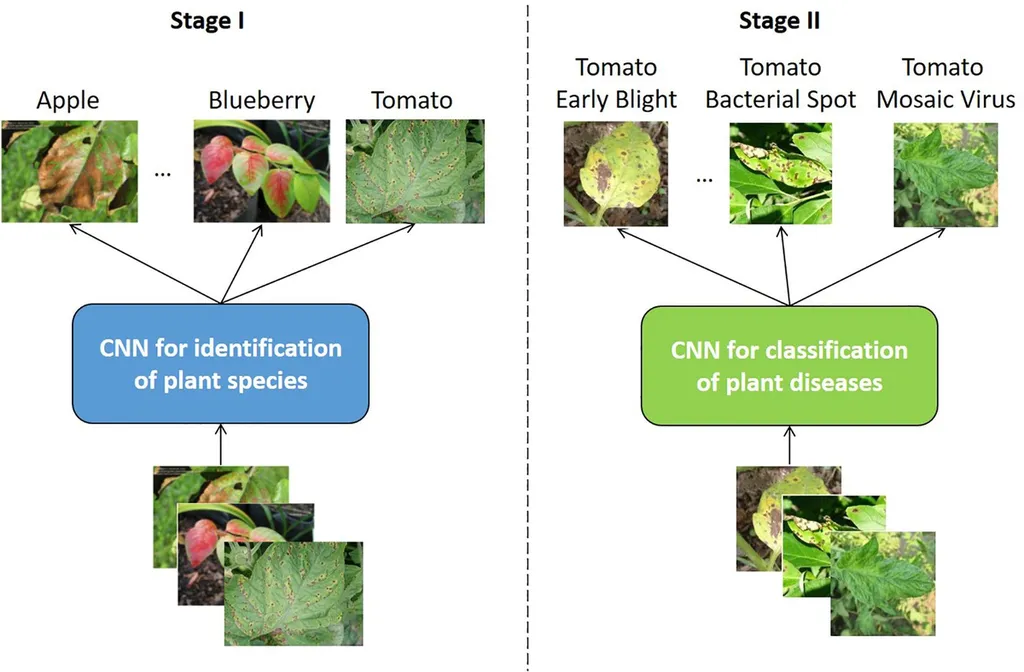In the heart of Pakistan, where tomatoes are a staple crop, a groundbreaking study is set to revolutionize disease diagnosis and severity estimation, offering a beacon of hope for farmers worldwide. The research, published in *Scientific Reports*, introduces a novel deep learning algorithm that combines visual and environmental data to combat plant diseases more effectively than ever before.
The algorithm, developed by lead author Nimra Nasir from the Department of Computer Science and Information Technology at Govt Sadiq College Women University, integrates EfficientNetB0 for image-based disease classification and Recurrent Neural Networks (RNN) for predicting disease severity based on environmental data. This multimodal approach addresses the limitations of unimodal systems, enhancing both accuracy and interpretability.
“Traditional farming solutions often fall short in diagnosing and predicting the severity of plant diseases,” Nasir explains. “Our model leverages the power of deep learning to provide farmers with precise and timely information, ultimately improving crop yields and food security.”
The model achieved impressive results, with a disease classification accuracy of 96.40% and a severity prediction accuracy of 99.20%. The use of LIME and SHAP explainable AI techniques further enhances the understanding of disease severity classification outcomes, making the technology more accessible and practical for farmers.
The commercial impacts of this research are substantial. By providing accurate and timely disease diagnoses, farmers can make informed decisions about pesticide use, reducing costs and environmental impact. Moreover, the ability to predict disease severity allows for proactive management strategies, minimizing crop loss and maximizing yields.
“This technology has the potential to transform the agriculture sector,” says Nasir. “By integrating advanced AI techniques with traditional farming practices, we can create more resilient and sustainable food systems.”
The research aligns with the principles of precision agriculture, which aims to optimize crop yields while minimizing environmental impact. As the global population continues to grow, the demand for efficient and sustainable farming practices will only increase. This study represents a significant step forward in meeting that demand.
Looking ahead, the success of this multimodal deep learning algorithm opens up new avenues for research and development in the field of agritech. Future studies could explore the application of similar techniques to other crops and diseases, further expanding the scope of precision agriculture.
In conclusion, this research offers a promising solution to the challenges posed by plant diseases, with far-reaching implications for the agriculture sector. By harnessing the power of deep learning and explainable AI, farmers can look forward to a future of increased productivity, sustainability, and food security.

